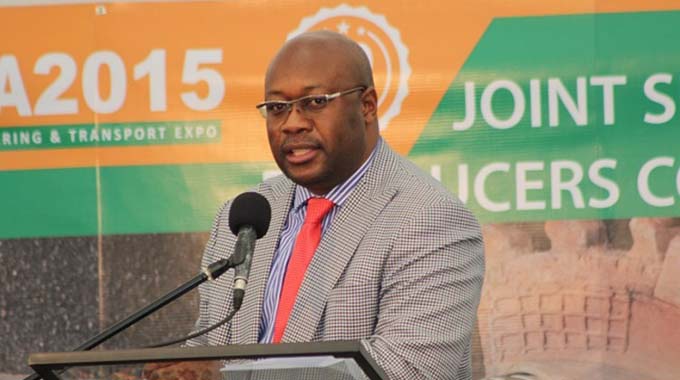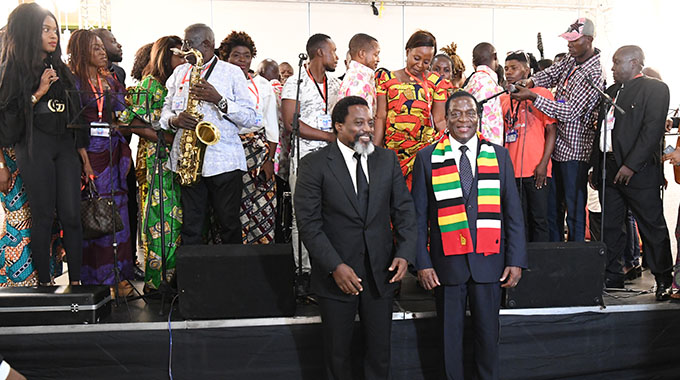Zim targets 10pc of global lithium output

Africa Moyo
ZIMBABWE is targeting to produce 10 percent of the world’s lithium output in the next four years, banking on anticipated huge investment towards its attraction, amid growing global demand for the mineral.
This comes on the back of an upsurge in investor enquiries on lithium.
Mines and Mining Development Minister Winston Chitando revealed this during the two-day Zimbabwe Mining Investment Conference 2018, which ended in Harare yesterday.
The conference attracted top mining companies from across the globe.
The remarks by Minister Chitando come at a time when several deep-pocketed investors are targeting Zimbabwe’s lithium assets.
Already, Government – through the Zimbabwe Mining Development Corporation (ZMDC) – said it had struck a deal with a foreign investor to exploit lithium deposits worth up to $1,7 billion.
“We do have, probably one of the latest minerals – the new kid on the block – lithium,” Minister Chitando told delegates yesterday.
“We now, as a country, have witnessed phenomenal interest in the extraction of lithium. There is a huge dump in the Kamativi area, which will generate about $1,7 billion.
“But besides that dump, there is in-situ material in the Kamativi area, which Government would want exploited. At the moment, ZMDC, which holds some other assets in the Kamativi area, is entering into a $10 million resource quantification exercise of the assets in Kamativi.”
Historically, in Zimbabwe lithium was only mined in Bikita, but there have been significant discoveries of the mineral across the country.
Government says there are more lithium assets just outside Harare and in Gweru.
Minister Chitando said Zimbabwe is now “poised to become the major producer of lithium in the world”.
“We are looking at achieving production of at least 10 percent in the next four years of world lithium. And certainly it should go to plus or minus 20 percent (in future),” said Minister Chitando.
In tandem with Government’s beneficiation policy, the Ministry of Mines is working with producers and potential producers of lithium so that they get into value addition.
Specifically, Government is keen on setting up a lithium battery manufacturing plant.
Finance and Economic Development Minister Patrick Chinamasa announced a 5 percent tax on exports of unprocessed lithium beginning January 2019.
Zimbabwe is currently the fifth largest lithium producer in the world after China, Chile, Australia and Argentina.
The growing use of lithium powered batteries across the world on the back of the increase in electrical vehicle production, has spawned massive demand for lithium exploitation.
It is anticipated that the market for electric vehicles would hit $100 billion in the next two years.
Meanwhile, Minister Chitando said Government was looking for investors keen to partner it in setting up a plant that would process refractory gold.
A refractory gold ore is defined as those ultra-fine gold particles disseminated throughout its gold occluded minerals. Research has shown that refractory gold ores are resistant to recovery by standard cyanidation and carbon adsorption processes.
Refractory gold occurs mainly in the Midlands area.
Minister Chitando said because of the “metallurgical challenges” faced due to the refractory nature of that gold, “a significant amount of it is not being exploited”.
“So Government, through MMCZ (Minerals Marketing Corporation of Zimbabwe) will be floating a tender for expression of interest by the end of March, for joint ventures to establish a plant in Kwekwe which should be a centre for the processing of refractory gold,” said Minister Chitando.
It is understood that there used to be a plant that processed refractory gold in the past, but it has not been operational for some time.
Government is encouraging investors eyeing the mining sector to put up projects worth $100 million and above so that they can apply for special mining leases. Special mining leases allow investors to negotiate with Government for their taxes and royalties, among others. Crucially, special mining leases are not subjected to any adjustments during their 25 year life.










Comments